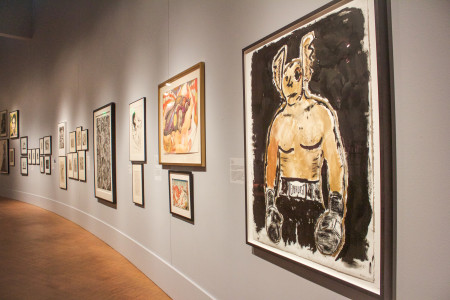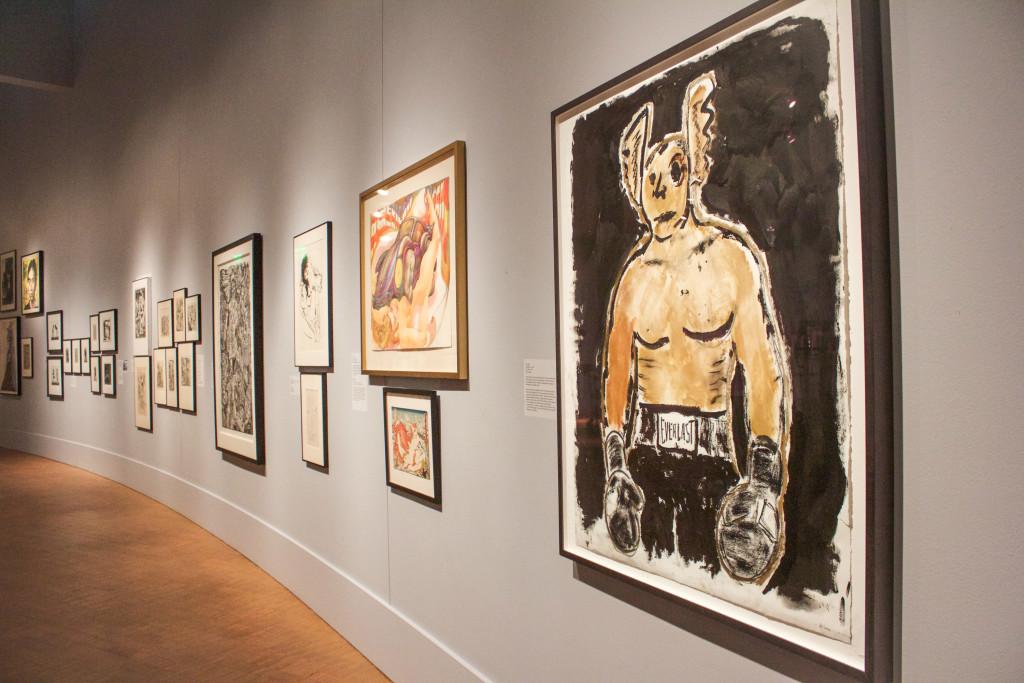
The Faulconer Gallery consistently houses exhibitions from world renowned and critically acclaimed artists. The beginning of this year is no exception to that rule. “Gordon Parks: The Making of an Argument” and “Playing It Forward: German Expressionism to Expressionism Today” make their debut appearance together to the Grinnell community today.
The initial phase of the plans for these exhibitions started at the beginning of Daniel Strong’s career as an art curator. Daniel Strong, Associate Director and Curator of Exhibitions for the Faulconer Gallery, began working for the art appraisers and consultants John L. and Roslyn Bakst Goldman of Rochester in the late 1980s, where he began his endeavor in the art world. When he moved to work at the College, the Goldmans were looking for a place to house their approximately 71-piece collection of German Expressionist prints. Grinnell was on the list of potential places after Cornell University, the Goldmans’ alma mater. Eventually, the College, in coordination with an anonymous donor, acquired the German Expressionist collection.
The prints were first on display in 2002 when Professor Jenny Anger, Art, and her exhibition seminar students curated the show. However, Strong believed it was important to show some of the prints again along with the new contemporary artworks influenced by German Expressionism that the Goldmans have acquired since selling their private collection to the College.
“Their tastes are still the same,” Strong said. “They’re still the same people. This exhibition aims to show a private collection collected by only two people.”
The new exhibition is comprised of mostly black and white prints except for a recently purchased John Scott painting. According to Strong, the gallery walls group the prints together so the viewer can see the group of prints as one large work of art.
In juxtaposition with this exhibit is the Gordon Parks LIFE magazine photographic essay “Harlem Gang Leader.” Published in 1948, Parks was the first black photographer to be employed by the magazine.
The exhibition, which contains original issues of LIFE, vintage photographs, contact sheets and proof prints, aims to highlight the editorial process behind the production of the photographic essay. The original intention of the photographic essay was to interrogate photography as a device, tool and function in addressing societal issues and the world of publishing.
Hung on different walls of the gallery, the exhibit is designed to mirror the way the photographs appeared in the magazine. First, images are displayed without any words connected to the photographs. Then, in another section, the viewer sees contact sheets of the series from which the selected photographs were chosen. In yet another section are more photographs of Red Jackson, the Harlem gang leader and the protagonist of the photographic essay.
“See, here? The editors wrote ‘not gangster’ because it didn’t fit the narrative they wanted to tell,” Strong said. “Usually the press asks themselves if they have the full story and it tries to be objective, but not the editors of this magazine. They were clearly stereotyping [Jackson].”
This exhibition came to fruition after Strong saw a photograph of Parks’ “Segregation Story” series in a gallery in San Francisco years ago. One thing led to another and the next gallery he worked for in Toronto eventually sold the 1956 colored photograph to the College.
But Strong believes both exhibitions have a common theme that ties into the College’s own mission.
“The German Expressionist prints show a resistance to oppression and were not conventional in technique,” Strong said for the official press release. “The Gordon Parks photographs show the editorial process and are more of the study of American life in Harlem. But both stand for social justice and are very adequate to show at the College.”
With an opening reception today at 4:15 p.m., the Faulconer Gallery welcomes both exhibitions to the College. The Goldmans will be present in the Gallery today and tomorrow and hope to meet with students.





























































